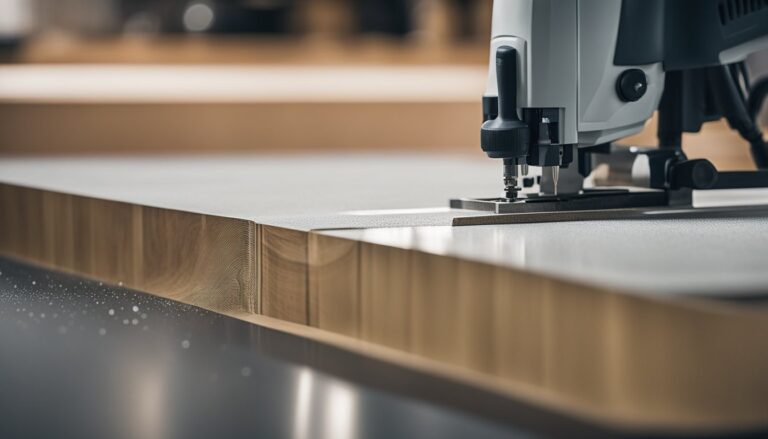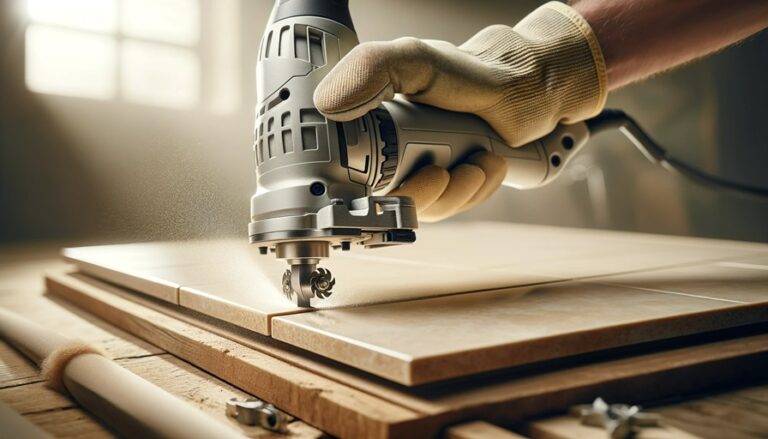Jig Saw or Scroll Saw: Choosing the Right Tool for Your Project
Choosing the right saw for your woodworking projects can be challenging, especially when deciding between a jigsaw and a scroll saw. Both tools have unique strengths and are designed for specific applications, but understanding these nuances can significantly impact your work’s quality and efficiency. A jigsaw is ideal for cutting thicker materials and making versatile cuts, while a scroll saw excels in creating intricate patterns and delicate designs.
The jigsaw provides the power and flexibility needed when handling thicker or more robust materials. With appropriate blades, it can cut through wood, metal, and ceramic tiles, making it a versatile addition to any toolkit. On the other hand, a scroll saw is perfect for detailed and precise work, allowing for smooth, intricate cuts that a jigsaw cannot achieve.
To make an informed decision, consider the types of projects you plan to undertake and the materials you’ll be working with. Selecting the right tool will enhance the quality of your work and improve your overall efficiency and satisfaction with the results. Read on to explore the benefits and limitations of each tool to find out which one best suits your woodworking needs.
Key Takeaways
- Jigsaws are versatile for cutting thicker materials.
- Scroll saws excel in detailed and intricate designs.
- Choose the right tool based on project requirements and materials.
Understanding Jigsaws and Scroll Saws
Jigsaws and scroll saws serve distinct purposes in woodworking and craft projects. They differ in core functions, key components, and blade varieties.
Core Functions and Purposes
Jigsaws are handheld tools ideal for making curved and straight cuts in various materials. They use a reciprocating blade and are highly versatile, capable of handling tasks from woodworking to metal cutting. The portability and ease of maneuverability make the jigsaw a staple for professionals and hobbyists.
Scroll saws, on the other hand, are table-mounted saws designed for intricate and precise cuts. They excel in detail work, allowing for smooth, detailed cuts on wood, plastic, or metal. Scroll saws are commonly used for decorative projects, including complex patterns and internal cuts that require precision.
The Key Components
The jigsaw’s main components include a motor, baseplate, and straight blade. The baseplate helps stabilize the saw during cuts while the motor drives the blade’s reciprocating motion. Some models have variable speed settings, which allow for greater control over different materials.
Scroll saws feature a fixed table, an arm to hold the thin blade, and a foot pedal or switch to control the speed. The blade’s tension is crucial, as it needs to be tight enough to minimize vibration while allowing for delicate cuts. Many scroll saws have an adjustable table to facilitate angled cuts and enhance the tool’s versatility.
Varieties and Blade Types
Jigsaw blades come in various types, including T-shank and U-shank blades. T-shank blades are more common due to their compatibility with many jigsaw models. Blades vary in tooth configuration, material, and size and are suitable for different cutting tasks. For instance, fine-toothed blades are used for smooth woodcuts, while coarser blades are ideal for faster, rough cuts.
Scroll saws use thin blades, typically up to 1/8-inch in width, allowing for fine-detail work. These blades come in different tooth counts and configurations, like skip-tooth, double-tooth, and spiral blades, each designed for specific materials and cutting techniques. Scroll saw blades can also be easily swapped to accommodate various projects.
Design and Material Handling
Both jigsaws and scroll saws offer unique features for different cutting tasks and material types. Jigsaws are versatile and portable, while scroll saws are superior for detailed and intricate cuts.
Cuts and Material Types
Jigsaws are designed for a wide range of straight, curved, and plunge cuts. They handle materials like wood, metal, plastic, and ceramic tiles. Switching blades makes a jigsaw adaptable to various tasks such as cutting plywood or PVC.
Scroll saws are ideal for precision work, especially on wood. They excel at making intricate cuts, curves, and internal cuts. They are used primarily on softer materials like wood and plastic, making them perfect for fine decorative work.
Material Thickness and Max Cutting Depth
Jigsaws can cut through thicker materials compared to scroll saws. Their maximum cutting depth is generally around 3/5 inches for wood and less for more rigid materials. This makes jigsaws suitable for projects requiring deeper cuts in plywood and other dense materials.
Scroll saws typically handle thinner materials with a maximum blade size of 1/8-inch. This limitation means they are best suited for projects involving detailed work on thin sheets of wood or plastic. They are not designed for thick or rigid materials, making them less versatile.
Specialized Cuts and Techniques
Jigsaws are highly effective for various specialized cuts. Plunge cuts are a prominent feature, allowing the saw to start cutting in the middle of a material sheet. Their design enables pierce cuts and internal cuts without drilling a starter hole.
Scroll saws are unmatched for detailed and intricate cuts, including complex curves and internal cuts. The finely-toothed blades allow for tight turns and precise cuts, making them suitable for artistic endeavours like fretwork and other detailed woodworking tasks. They are also effective for creating intricate designs in softer materials.
Practical Applications and Versatility
Understanding the unique practical applications and versatility of jigs and scroll saws is essential for woodworkers, crafters, and DIY enthusiasts alike. Each tool excels in different tasks, catering to specific needs and providing advantages in various projects.
Woodworking and Craftsmanship
Scroll saws are highly valued in woodworking and craftsmanship for their ability to create intricate and detailed cuts. They are perfect for tasks that demand high precision, such as intarsia and marquetry. The stationary design and a scroll saw thin, tensioned blade allow woodworkers to execute controlled and delicate work, making them ideal for small, elaborate designs.
On the other hand, jigsaws offer versatility and are suitable for a broader range of cutting applications. They can handle straight cuts, curves, and even bevelled edges in various materials. While they might not precisely match the scroll saw, jig saws can efficiently manage larger and thicker materials, providing versatility for many woodworking projects.
Artistic Applications
Scroll saws stand out for artistic applications due to their ability to create complex shapes and detailed artwork. Artists working on pieces that require fine cuts and detailed patterns, such as decorative wooden panels or intricate craft projects, benefit significantly from the precision provided by scroll saws. The stationary nature and fine blade make producing smooth edges and delicate curves easy.
Jig saws are also helpful in artistic applications, particularly for less detailed work requiring versatility. They can cut through various materials, including metals and plastics, allowing artists to experiment with mixed media projects. Though not as precise as scroll saws, jig saws provide the flexibility to create a wide range of artistic works.
Home Improvement and DIY Projects
Jig saws are typically the preferred tool for home improvement and DIY projects due to their broad application range. DIYers appreciate the jig saw’s ability to handle various materials and thicknesses, making it suitable for cutting countertops, fitting flooring, or constructing furniture. The numerous blade types available for jig saws enhance their adaptability in home improvement scenarios.
Scroll saws are less common in general home improvement but shine in specific scenarios requiring fine detail. Projects involving decorative elements or custom trim work benefit from the scroll saw’s precision. For example, creating intricate patterns for a decorative wooden screen or detailed fretwork on furniture can be achieved with greater accuracy using a scroll saw.
Operational Considerations
When deciding between a jigsaw and a scroll saw, several operational aspects come into play. These include ease of use and control, dust and noise management, and each tool’s safety features.
Ease of Use and Control
Jigsaws are often praised for their portability and versatility. They are relatively easy to maneuver, making them suitable for various cutting tasks. Cordless options add to their convenience, allowing unrestricted movement around the work surface.
Scroll saws, by contrast, are typically mounted on a table, which offers stability. This makes them ideal for projects requiring high precision and intricate cuts. The stationary nature of scroll saws can aid in better control, especially when working on detailed patterns.
Dust Management and Noise
Dust management is a critical factor to consider for both tools. Jigsaws often come with dust blowers to keep the cutting line clear, but due to their aggressive cutting action, they tend to create more dust. Some models also include dust collection ports for connecting to a vacuum.
Scroll saws produce less dust, given their slower cutting speeds and finer blades. Many scroll saws have integrated dust blowers and ports to maintain a cleaner work environment. Noise levels are also usually lower with scroll saws, making them a better choice for quieter settings.
Safety Features
Safety features are paramount when choosing between a jigsaw and a scroll saw. Despite their ease of use, jigsaws can be hazardous if not handled properly. To reduce risks, they have built-in safety mechanisms such as trigger locks and blade guards.
Scroll saws are generally considered safer due to their stationary design and enclosed blade. The blade is held at both the top and bottom, minimizing the chances of accidents. Some scroll saws also offer a foot switch to stop the blade quickly, adding an extra layer of safety.
Comparing Jigsaws and Scroll Saws
Choosing between a jigsaw and a scroll saw depends on the nature of the projects and the specific requirements of the cuts. Each tool has unique features and advantages that cater to different needs, whether versatility, precision, or cost-effectiveness.
Dissecting the Key Differences
Jigsaws are handheld power tools known for their versatility and portability. They use a straight and narrow blade for straight and curved cuts. Their portability makes them ideal for on-site tasks and varied materials.
Scroll saws, on the other hand, are table-mounted and designed for precision. They have smaller, thinner blades that excel at intricate cuts and detailed work. Their stationary nature provides stability but limits their versatility in terms of mobility.
| Feature | Jigsaw | Scroll Saw |
|---|---|---|
| Blade Type | Straight and narrow | Smaller and thinner |
| Portability | High | Low |
| Operation | Handheld | Table-mounted |
| Precision | Moderate | High |
| Versatility | High | Low |
Price and Cost Effectiveness
Jigsaws generally fall into a broader price range, accommodating both budget and premium options. Basic models can be inexpensive, making them accessible for hobbyists and occasional users. In contrast, scroll saws, while also available across various price points, tend to be more expensive due to their specialized nature and precision capabilities.
For instance, an entry-level jigsaw might cost around $30-$50, whereas scroll saws can start at approximately $100. Investing in a higher-end model of either tool will increase costs and enhance features like blade speed control, durability, and additional accessories.
Selecting the Right Saw for the Job
Selecting the appropriate saw heavily depends on the intended use. A jigsaw proves invaluable for general DIY projects, home repairs, or tasks requiring versatility in material cutting. Its handheld design and adaptability make it a go-to tool for various applications.
Alternatively, a scroll saw is superior for detailed woodworking, model-making, or any project where precision and intricate cuts are paramount. Its ability to deliver refined, controlled cuts makes it ideal for craftspeople focused on quality and detail.
In summary, both tools have strengths: jigsaws for their versatility and scroll saws for their precision. Understanding the key differences, costs, and specific project needs will guide any woodworking enthusiast in making the right choice.





